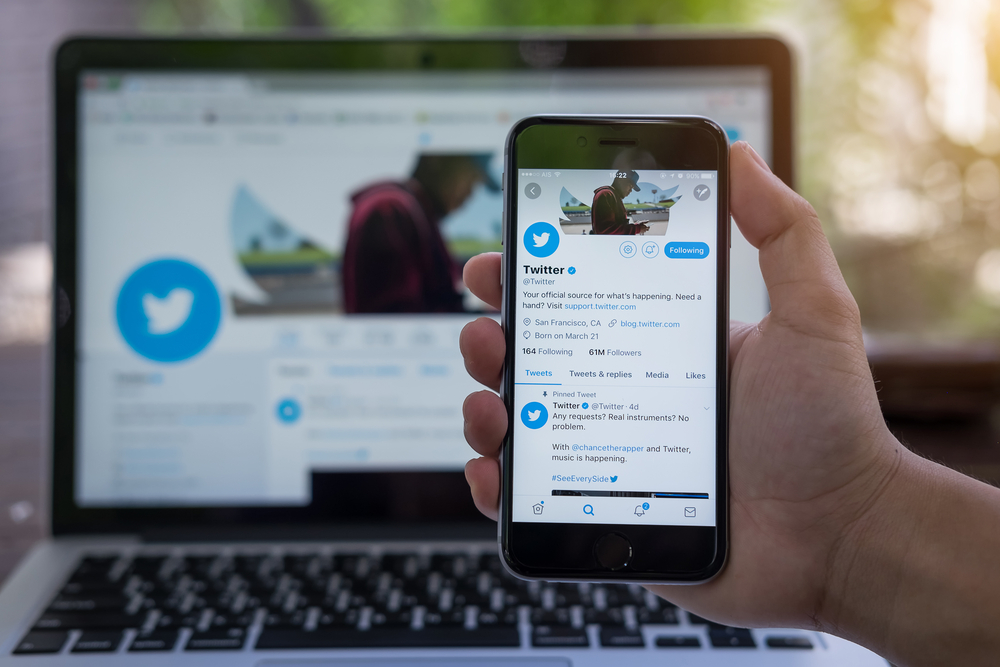Although Elon Musk’s Twitter acquisition (valued at roughly $44 billion) has yet to go through, he has revealed his upcoming plans for the social media company in a pitch deck to investors obtained by the New York Times.
Musk is looking to significantly grow Twitter’s annual revenue, user revenue, and total users. Meanwhile, the effects of his pending acquisition are already becoming become noticeable, as Twitter’s stock has decreased since the reveal of the pitch deck.
Read on to learn about Musk’s plans for the social media giant’s services and how they may shift the social media landscape.
Musk Looks Toward Twitter’s Future

Musk presented a pitch deck to Twitter investors on May 6 that outlined his vision for the company’s future.
His plans begin with extensively boosting annual revenue and reach $26.4 billion by 2028 — five times the amount of 2021’s annual revenue of $5.08 billion. Although Twitter’s projections are promising, they fall short compared to other social media platforms. Meta, for example, is projecting to generate between $28-30 billion by the end of Q2 2022.
Musk is looking to grow Twitter’s annual revenue without relying on advertisement as much. The pitch deck revealed that advertising revenue would be cut in half by 2028, representing roughly 45% of the company’s annual revenue.
Cutting Twitter’s advertising revenue goes against other social media platforms’ strategies. When looking at Meta, home to Facebook, Instagram, and other social services, ads made up over 98% of its total revenue in 2021. Social media advertising spending is expected to reach a record high of $177 billion in 2022, passing television advertising by $3 billion, Zenith reports.
By 2028, advertising will account for $12 billion of Twitter’s revenue, followed by subscriptions with nearly $10 billion, according to the pitch deck.
Twitter is not the only company to reevaluate its need for advertising revenue. In Q1 2022, The New York Times reported a $61 million decline in advertising revenue compared to Q4 2021. However, the company’s subscription revenue increased by $21 million in the same timespan.
“We’re confident that we can attract, retain and monetize subscribers and drive profitable growth as we progress towards our goal of 15 million subscribers by the end of 2027,” Meredith Kopit Levien, NYT president and chief executive officer, said.

Another goal mentioned in Musk’s pitch deck is to bring in $15 million by 2023 from a payments business, with hopes of growing it to approximately $1.3 billion by 2028. He is also looking to increase average revenue per user by 20% and raise free cash flow to $9.4 billion, according to the New York Times.
Musk plans for Twitter to reach 931 million users by 2028 and have 104 million users for a new subscription product.
This projected growth, if materialized, would empower Twitter to become the eighth most-used social media platform in the world — it currently sits as number 15.
To achieve his goals, Musk is looking to add roughly 4,000 new employees by 2028, although the numbers may fluctuate in the near future, as he allegedly projects layoffs in 2023 after a slight growth in 2022.
The Days Following the Release of Musk’s Pitch Deck Plans
Before Musk’s plans were announced, Twitter stock had already been declining. On May 6, when the New York Times revealed his investors pitch deck, the company’s stock closed at $49.80 per share and continued to decline, closing at $47.30 per share on May 10.

At a conference for the Financial Times on May 10, Musk announced that he will reverse the ban on the Twitter account of Donald Trump if the acquisition is completed.
He explained his reasoning, saying that Twitter made a mistake in banning the former president because it “alienated a large part of the country,” and “did not ultimately result in Donald Trump not having a voice.”
Twitter in the Subscription Space — What’s Next?
Twitter Blue is currently the only subscription for the social network, though not for long. Musk plans to launch a new subscription product, according to the New York Times.
While the details are mostly unknown, Musk expects the service to acquire 104 million subscribers by 2028 — more than he anticipates Twitter Blue to reach in the same period.
Twitter had touched on the state of its current subscription in its 2021 letter to shareholders, stating, “While very small as a percent of revenue today, we believe Twitter Blue and other subscription-related revenue represents a significant opportunity for Twitter over time.”
Expanding Twitter’s offering through subscriptions may empower the company to compete with industry leaders in the near future. Ultimately, the key to Twitter’s success relies on implementing changes seamlessly while strengthening its relationships with its users.
“Twitter has tremendous potential,” Musk said. “I look forward to working with the company and the community of users to unlock it.”
Key Takeaways:
- Elon Musk has revealed his upcoming plans for Twitter in an investors pitch deck obtained by the New York Times.
- He is looking to significantly grow Twitter’s annual revenue, user revenue, and total users.
- Advertising revenue is set to take a large cut under Musk, falling to half of what it was in 2020.
- Musk announced at a conference that he would be reversing the ban of Donald Trump’s Twitter account after the acquisition closes.
- Musk’s plans for a new Twitter subscription service are unknown, but he predicts the service will have amassed 104 million users by 2028.
Looking for more opportunities to market your business? Get professional advice on how to better your brand by attending SubSummit, the world’s largest subscription conference.


